
Chasing carbon emissions from Arctic lakes in drier regions
Expedition Location: Kangerlussuaq, West Greenland
Expedition Dates: March 30, 2023 – April 11, 2023
Participants: Vendy Hazukova, Amanda Gavin
Funding Support: The Robert and Judith Sturgis Family Foundation and NSF DDRIG
Background and Significance:
Collecting carbon dioxide data from Arctic lakes is needed because inland waters are important sites of carbon processing and are often expected to be large sources of carbon emissions to the atmosphere. In the Arctic, the importance of lakes as carbon sources is amplified as permafrost begins to thaw, changing landscape hydrological pathways and delivering large amounts of terrestrial carbon sequestered in the frozen soils to the freshwater systems where mineralization occurs. However, inland waters have the potential to behave as both a sink and a source of carbon within the landscape. Hydrological connectivity is an important regulatory mechanism of carbon transport between land and aquatic systems, especially in systems with low rainfall-runoff ratios such as the Arctic tundra. In regions with low effective precipitation, limited runoff decreases mobilization of organic matter and nutrients from the landscape to aquatic systems. If delivery of terrestrial carbon to inland waters is limited, processing of soil carbon may be dampened given that rates of carbon mineralization are higher in aquatic systems than in the soil. Therefore, decreasing hydrological connectivity may ultimately contribute to attenuation of the positive feedback between climate and permafrost, and arid Arctic landscapes that have so far been neglected could come to play a more significant role. Lakes embedded in dry Arctic landscapes are represented in < 1% of studies, despite the fact that arid conditions with low effective precipitation are representative of about ~25% of the northern permafrost lake area. This project aims to quantify CO2 emissions from lakes at the low end of the hydrologic connectivity gradient, focusing on Kangerlussuaq, West Greenland as a model landscape.
Field Report:
On April 1, 2023, Vendy Hazukova and Amanda Gavin, both PhD students in Dr. Jasmine Saros’s lab, arrived in Kangerlussuaq to begin their second season of wintry Greenland field work. Their goal was to deploy state-of-the-art carbon dioxide sensors to 6 lakes in the region in order to measure aquatic carbon dioxide concentrations at a high frequency until late summer. These measurements will provide unprecedented insight into the seasonality of carbon dioxide emissions. Lakes are expected to release large quantities of carbon dioxide emissions at ice-out because ice cover prevents regular exchange of gases between lakewater and the atmosphere. However, considering the difficulties with collecting measurements when ice cover is melting and is unsafe to walk on, measurements of carbon dioxide at iceout are extremely rare.

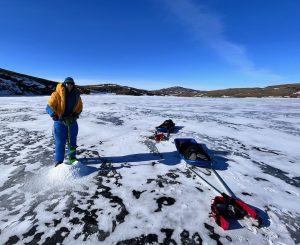
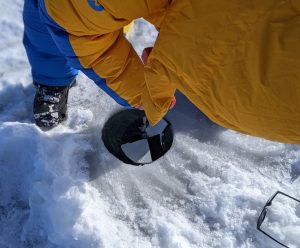
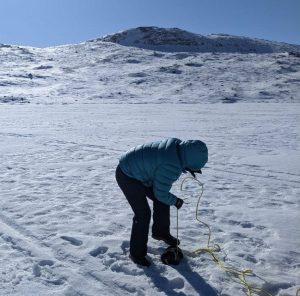
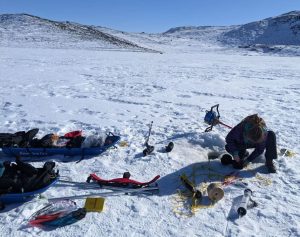
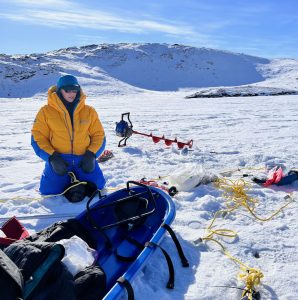
After a week filled with more than 100 miles of hiking with sleds full of equipment, drilling through more than 10 m of black lake ice, Amanda and Vendy managed to deploy 6 sensors under ice and collect water samples from a total of 10 lakes. While the field expedition was more than successful, Vendy and Amanda will not know whether the deployed sensors collected data properly until they return to their field sites this July. Wish them luck!
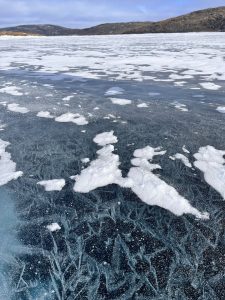
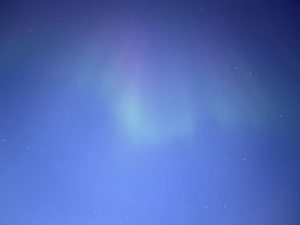
Acknowledgment: I would like to thank The Robert & Judith Sturgis Family Foundation for financially supporting this research.

